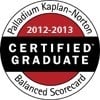In the bustling marketplace, it's easy to feel like just another face in the crowd. How do you get potential customers to choose *you* when there are seemingly countless options available? This comes down to competitive differentiation, and it’s what separates the successes from the also-rans.
Are you truly distinct, or are you just blending into the background noise? It can feel overwhelming to answer that honestly. But it’s what helps companies achieve a winning strategy in today’s marketplace with strong competitive differentiation.
Defining Your Difference
Standing out is less about being completely new. It is more about highlighting the things you have to offer. It involves a firm understanding of how to address customer needs.
Author, Michael Porter, pointed out that competitive strategy is about choosing a valuable position rooted in systems. This comes with the approach for providing real solutions, not just clever marketing.
Understanding the Core Concept
At its heart, it’s about creating a specific reason for customers to choose your offering. This hinges on what customers truly value, be it functionality, price differentiation, brand association, or something else.
Marketing’s role is critical in highlighting these distinctive aspects. But the process isn’t limited to marketing departments. The effort flows through the whole company.
Why It Matters in Today’s Markets
Most markets are super crowded. Unless you happen to find an industry without much competition, there is a race happening right now by your competitors. Having this competition is good as it means there is potential to build the best possible solution for customers in that marketplace.
It's so important to provide something noticeably better or at least different. Helping customers see why you fit them is key.
Practical Ways to Differentiate

Differentiation comes from offering value. This could show itself in multiple forms across all points of contact a company has with a customer.
This approach requires figuring out your brand positioning first. Also answering where you intend to address client needs is crucial.
Product Differentiation
This is about the tangible aspects. Think specific features, design, how long it lasts, and its performance in customer interactions.
If your product offers a much easier, simpler user experience it should get the buyer to purchase. Think how Colossus, created a campaign, emphasizing product differentiation.
Brand Differentiation
How do customers recognize and feel about your brand? Brands are enhanced by positive recognition and can grow based off of targeted advertising. Companies must make it clear what differentiates themselves to further promote customer awareness, interest and, ideally, loyalty to help create long-term customers.
Gong stands out by emphasizing this way to become more noticeable in a crowded field. Building a strong brand identity makes their value hard to ignore.
Price Differentiation
This affects how customers view the value relative to cost. It involves things like your price and customer pay plan.
You could decide to be budget-friendly or aim for the high end. Offering options, like subscriptions, might set you apart and create more revenue in the long run with higher profit margins.
Service Differentiation
How does your business connect with people? Think every touchpoint from help online to replies on social media.
Great support, personal replies, fast fixes to problems build strong relationships. This kind of care can increase profit and buyer happiness with their buying experience.
Channel Differentiation
This focuses on delivery to the customer. So important factors can range from online store to same-day shipping.
Where you offer is just as essential as the product or service differentiation you are offering. Think about the best way you will give the customers what they need in the delivery of your product, providing a compelling reason to choose you.
Building Your Differentiation Strategy
So, we are looking at how to be different but what if being truly different means a complete approach shift? Sometimes building a strategy differentiation helps companies avoid "red oceans," filled with businesses fighting for the same small piece of the market.
With a “blue ocean,” approach businesses might create their own niche and reach previously not explored by their competitors. Think Wayfair as an online only store or Cirque du Soleil blending theater with the circus in ways audiences have never experienced.
Research is Key
You can’t find those standout aspects without research. Digging deep helps show where chances have been previously missed by you or by others in the same space.
Over 600 studies demonstrated the advantages of hugs for children in the hospital. Once known, the concept could shift the competitive landscape for those companies focused on taking care of those newborn babies.
The Competitive Landscape
Analyzing where the competitors stand will reveal a lot. You will know about things they do great and also things they aren’t getting done, as well as the competition as a whole. Looking carefully at others is the key component here for growth.
Understanding your market knowledge of the competition, strengths and weaknesses can help refine your business plans. Knowing their market share, advertising methods, and standout points clarifies your next moves.
Consider using SWOT analysis to make things clearer and gain direction. When done well, your standout points will shine through in your marketing.
Clear analysis points out what is working and helps with establishing competitive differentiation.
Crafting Messaging with Competitive Differentiation in Mind
Once the strategy differentiation for being starts forming, sharing your strategy of value effectively is key. Marketing campaigns, websites, and even sales talks need to convey a consistent, clear plan that reflects the value the customers want.
Making potential customers understand why the business stands apart relies on the proper wording. Be mindful of what words are being chosen by others to really differentiate the company.
Value Proposition
This includes more than making the brand better than others. Your approach needs steps for a new type of differentiation strategy.
It shows that not just any value proposition matters. Instead, the value needs to clearly explain that the business is different. Creating a structured way to find distinct advantages will increase profit margins.
Examples in Action
There are numerous ways differentiation strategy plays out in all different sectors of industry.
No-Code Development Platforms
In the very crowded no-code development platform market, companies must innovate just to keep from being too similar. Competitive intelligence helps these platforms know where they stand.
This often involves developing and testing products to deliver better offerings to meet user needs, at affordable price points. Differentiation helps with growth and client commitment over time. It allows these platforms to charge higher prices.
SaaS Companies
With so much competition, the United States hosts 16,000 SaaS companies as of this year. These businesses face how to shine, with competitive strategies to reach consumers being ever important, and customer feedback becomes vital.
How has Airtable, been so successful? Focusing on the value a particular brand provides will lead to better business insights for growth and build brand loyalty.
Other Key Areas
Differentiation in retail can come down to presentation in spaces like selling only from an online furniture store versus brick-and-mortar establishments. A small local company might provide "White-Glove delivery".
This is done so that the furniture isn't dropped at the customers curb - which most competitors do. This shows strong differentiation in a crowded market. Distribution differentiation matters just as much.
Tools and Techniques for Success
Multiple ways exist to make differentiation effectively. The key here is to analyze current processes.
Figuring out selling points is one strategy. The purpose of competitive advantage differentiation shows a need to understand different solutions, along with looking at weaknesses and opportunities, with the SWOT approach.
| Approach | Explanation |
|---|---|
| Product Differentiation | Product has to stand apart based on its design or how well it addresses real problems that customer have. It should solve problems in a way competitors don't. |
| Brand Differentiation | How customers recognize, experience, and relate to your brand is extremely important in competitive differentiation. It focuses on what draws customers to you instead of the competition. |
| Price Differentiation | Pricing and availability of purchase programs needs to be considered as factors when developing the company's plans for competitive positioning. Think of it as differentiation pricing that others struggle to match. |
| Service Differentiation | Connecting to potential buyers by understanding and helping them where needed by making sure their service and support needs are met, and helping where possible. This can be the compelling reason a customer stays loyal. |
| Channel Differentiation | Channel is key, because if your product isn't available to your consumers in ways they can accept it, then you don't really have anything available to your consumer. If customers find it hard to buy from you, it differentiates you in a negative way. |
Choosing a plan means setting clear points to set your company in its position against rivals. Being "better" comes by delivering what you claim, especially the needs of your target audience.
Conclusion
Competitive differentiation goes past finding a smart slogan. It shapes business strategy and culture and creates competitive advantages.
Competitive differentiation works for reaching lasting customer preference and growing brand equity. Doing this successfully might mean not always aiming for bigger, just different by offering unique benefits.
We are a full-service Hubspot Certified Inbound Marketing and Sales Agency. In addition, we work to integrate your SAP System with Hubspot and Salesforce, where we have a deep delivery capability based on years of experience. Please our book a meeting service to get started.




